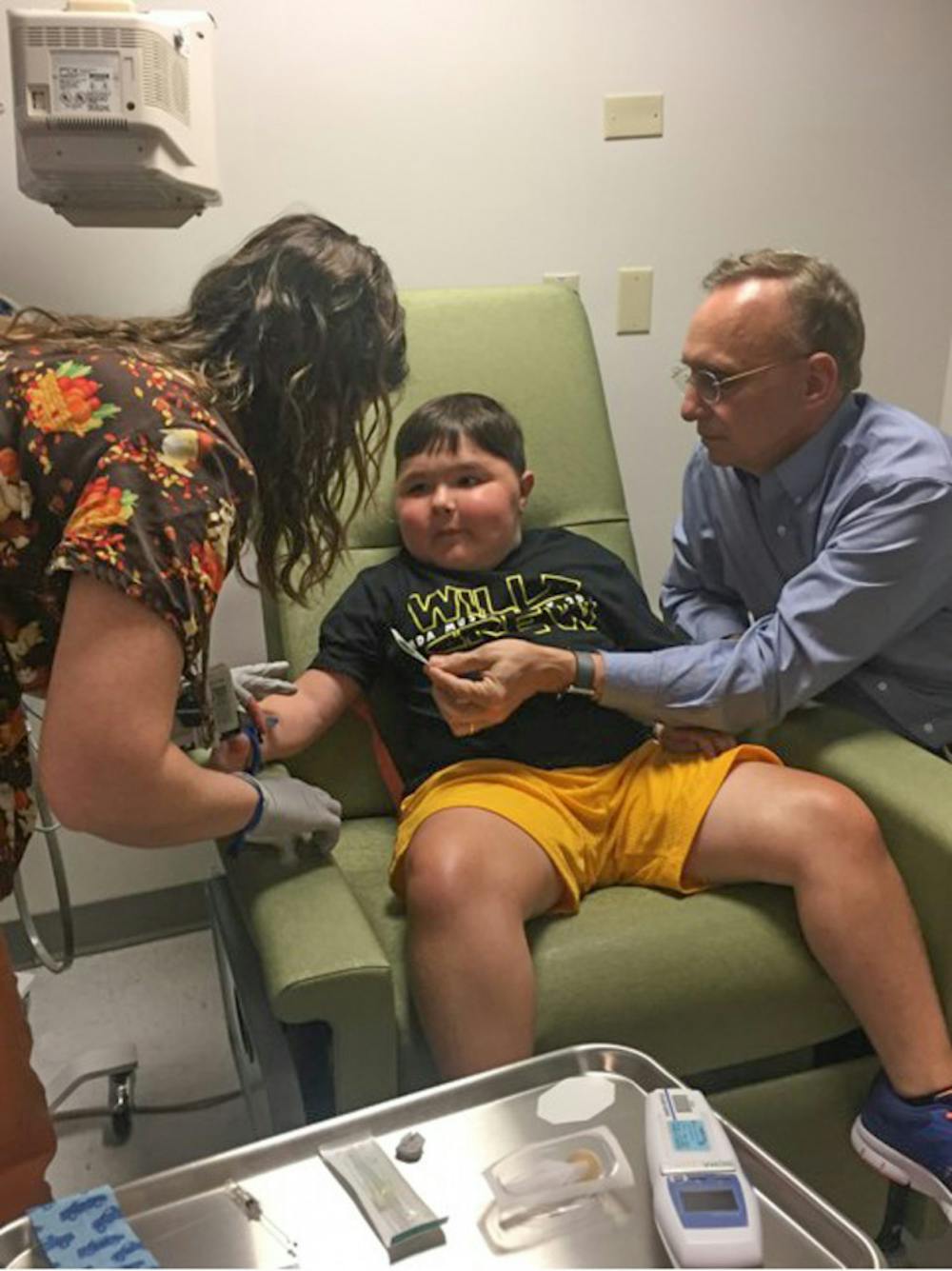Against the light-green walls of a room on the fourth floor of UF Health Shands Children’s Hospital, a 9-year-old boy clenched his fist as a nurse hooked an IV into his arm Tuesday.
For Will Barkoskie and his mother, Blake Barkoskie, 38, the trips from Jacksonville, as well as the treatments, are becoming a weekly routine.
“Haven’t I always been brave when I get poked?” Will asked his mother Tuesday, as the nurse prepared a new 1,400-milliliter infusion to treat his Duchenne muscular dystrophy. The genetic disorder is characterized by progressive muscle degeneration.
On Oct. 5, Will became the first and only person in the U.S. to start the first commercially available therapy, called Exondys 51, to treat Duchenne muscular dystrophy, wrote Dr. Barry Byrne, a professor of molecular genetics at UF’s College of Medicine, in an email.
Doctors and Will’s mother hope the therapy, approved Sept. 19 by the Food and Drug Administration, improves his quality of life.
The diagnosis came when Will was 2 years old. As a baby, he didn’t crawl. When he did walk, he struggled with balance and often fell. His parents quickly realized something was wrong.
Duchenne muscular dystrophy is caused by an absence or deficiency of dystrophin — a protein responsible for stabilizing the cell membrane, — in skeletal muscle, Byrne said. Symptoms of the condition appear in early childhood and usually lead to severe disability in teenage years and death by the mid- to late-20s.
Over the past seven years, Blake Barkoskie said her son has increasingly struggled. He started this past school year unable to write.
“He gets tired now. Days are longer and harder for him,” she said.
On Sept. 19, Barkoskie learned her son was among the 13 percent of those with Duchenne muscular dystrophy worldwide who could benefit from the therapy. It gave her hope.
“I’ll never forget that day, because it was my husband’s birthday and was the best birthday gift ever,” she said.
The new treatment, made up of hourlong weekly infusions, costs about $600,000 for Shands to administer. Doctors hope the treatment will enable the muscle cells in Will’s body to make dystrophin, Byrne said.
For Barkoskie, she hopes the treatment will improve her son’s energy levels.
“I hope through this treatment that Will will live a longer, happier life and be able to be as independent as he can,” she said.
A UF Health Shands Hospital nurse tends to 9-year-old Will Barkoskie’s IV while Dr. Barry Byrne, a UF College of Medicine professor, looks on. Diagnosed with Duchenne muscular dystrophy, Barkoskie is receiving groundbreaking treatment at Shands.






